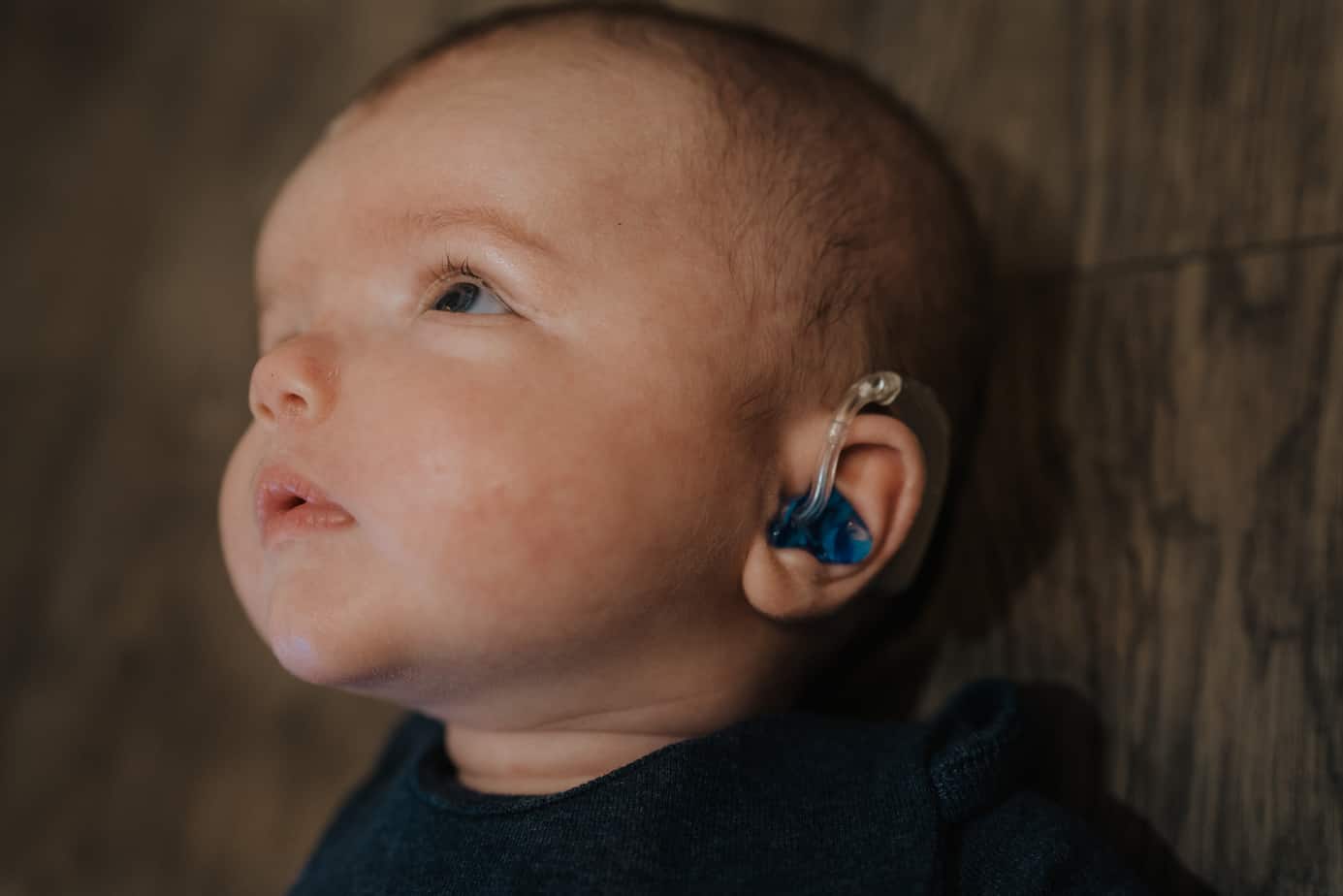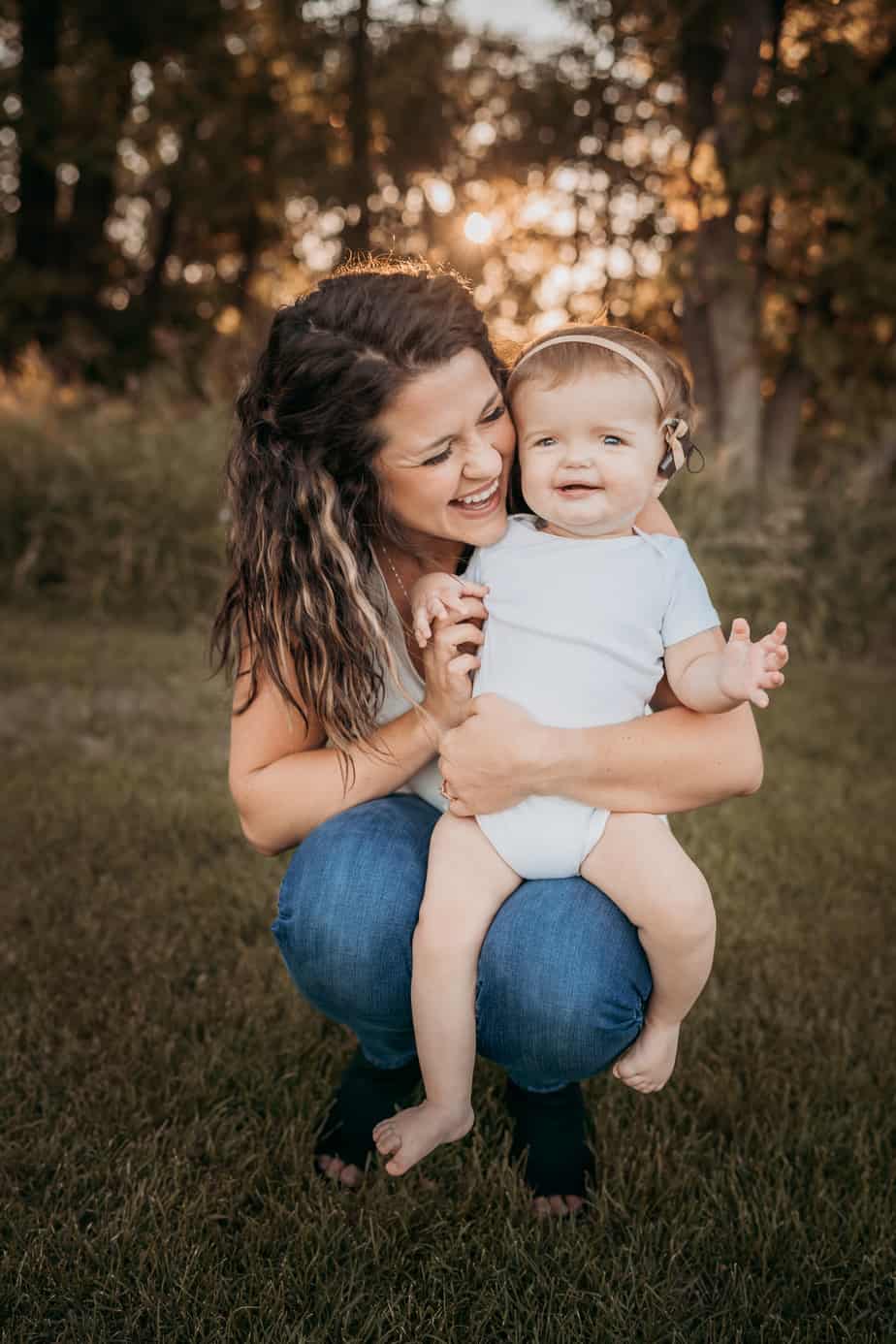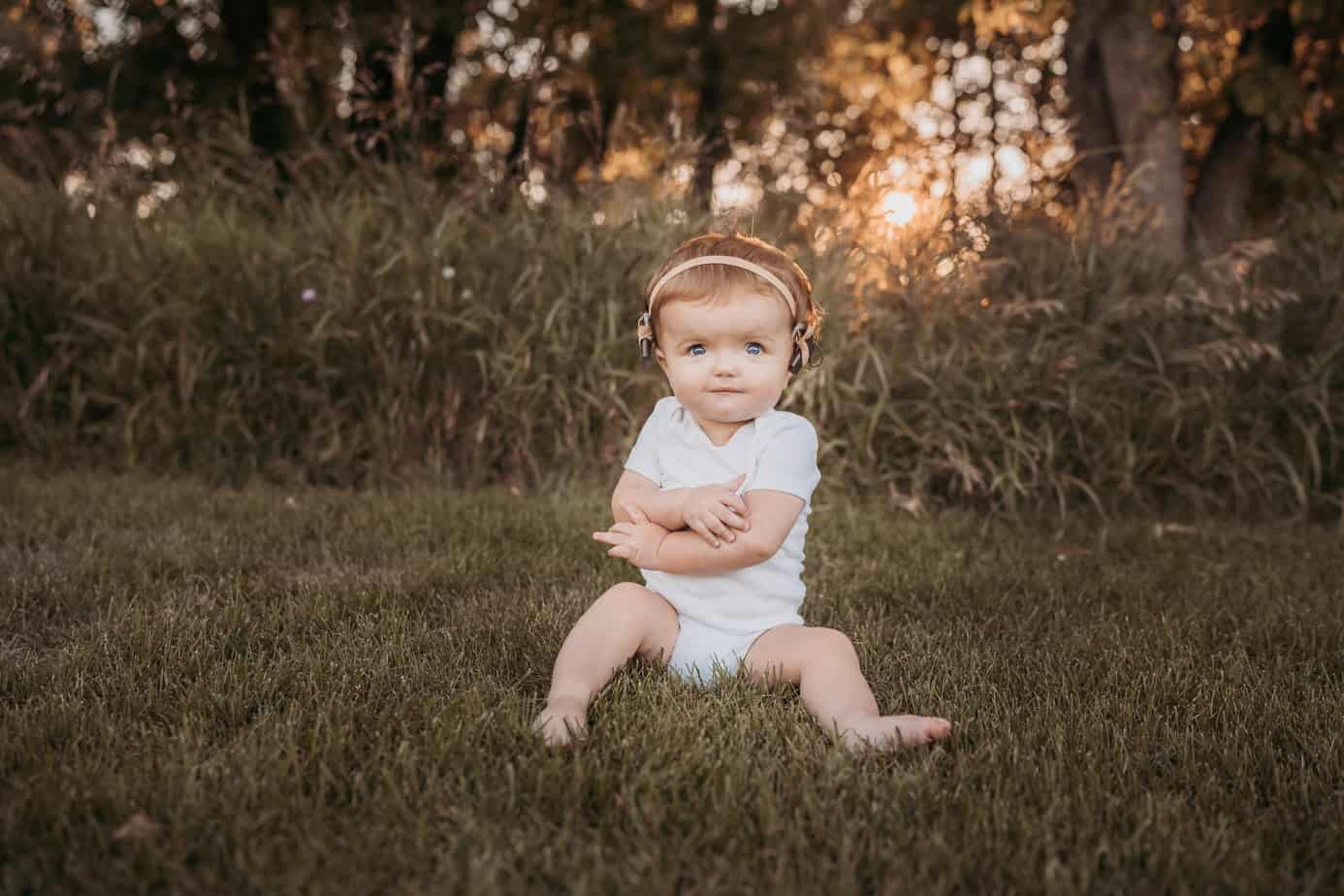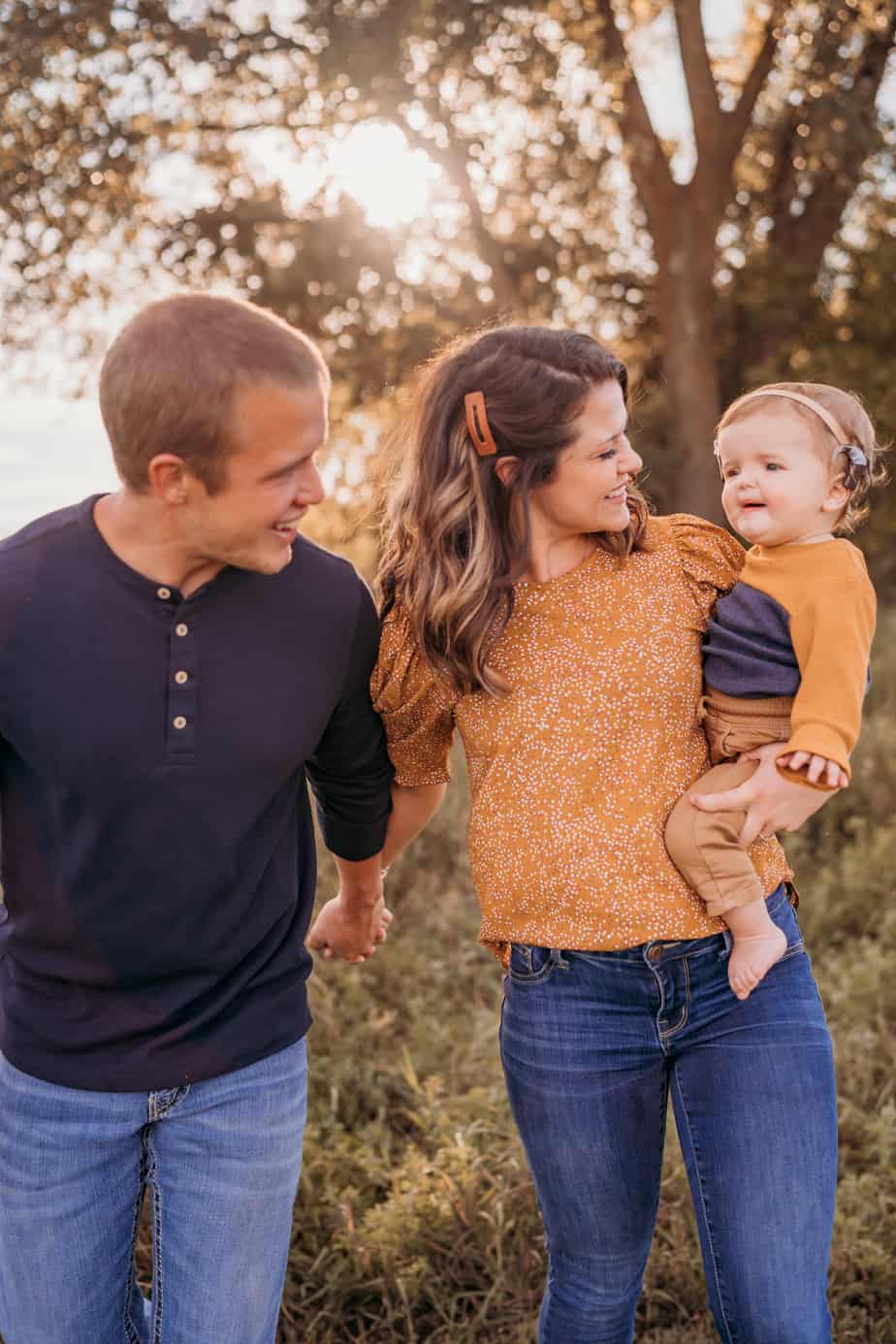Beth and her husband were shocked when Cooper was born with Waardenburg syndrome and profound hearing loss. After assessing their options for his future, they determined they wanted to equip him both with cochlear implant technology and learning ASL. Read on to see how Cooper is doing today:
“When our son Cooper was born profoundly deaf, there was no one more shocked than me and his father. As two hearing adults, it had never crossed our radar that there was a possibility our baby could be born without the ability to hear.
What started out as a world-rocking diagnosis 18 months ago has since evolved into the single most profound journey I’ve been part of — one that I wouldn’t trade for the world.
Waardenburg syndrome diagnosis
 When Cooper was born, he had a huge patch of white hair mixed in with his otherwise dark hair. My whole pregnancy, I’d been asking my husband Brandon if he thought he’d be born with my dark hair or Brandon’s lighter hair. So, when he came out with both, we joked that Cooper couldn’t choose. We were told that some kids are born that way and it goes away, while for others it stays. So, we didn’t think much of it.
When Cooper was born, he had a huge patch of white hair mixed in with his otherwise dark hair. My whole pregnancy, I’d been asking my husband Brandon if he thought he’d be born with my dark hair or Brandon’s lighter hair. So, when he came out with both, we joked that Cooper couldn’t choose. We were told that some kids are born that way and it goes away, while for others it stays. So, we didn’t think much of it.
About three weeks after Cooper was born, I posted in one of my mom groups on Facebook1 asking whether anyone else’s littles had patches of hair like this. I was just curious, honestly. Some babies had tiny spots, mostly in the back of their hair, while Cooper’s was front and center. But there was one comment from one of the group members that stood out, a comment that brought up the lighter hair being a marker for Waardenburg syndrome.
At that point, I had never heard of Waardenburg syndrome. Out of curiosity, I searched it. When I started reading, my world stopped. It was like I was reading through a checklist describing my perfect baby boy. The part that concerned me the most though was the hearing. Hearing issues go hand-in-hand with Waardenburg syndrome, and so far, both Cooper’s hearing screenings hadn’t elicited any response. I threw my phone at my husband and told him to read what I had read. Worry kicked in for him at that point as well.
Further testing for Cooper
 After learning more about Waardenburg syndrome, we became very proactive in having Cooper scheduled for further testing. On October 18, 2019, we officially learned our 6-week-old baby had never heard a word we had said, nor any other sounds of the world.
After learning more about Waardenburg syndrome, we became very proactive in having Cooper scheduled for further testing. On October 18, 2019, we officially learned our 6-week-old baby had never heard a word we had said, nor any other sounds of the world.
While the day of his official diagnosis as deaf was gut-wrenching, it wasn’t entirely unexpected. We allowed ourselves time to grieve and work through our emotions, and we came out the other side with complete and utter resolve to do everything in our power to set Cooper up for success.
Road to cochlear implants
 After spending a few days digesting Cooper’s diagnosis, we began to delve into our next steps. The way we saw it, we had three options:
After spending a few days digesting Cooper’s diagnosis, we began to delve into our next steps. The way we saw it, we had three options:
1 – Learn sign language and choose that as the primary way of communication with our child
2 – Determine if our child was a cochlear implant candidate and if he was, go that route with spoken language as the goal
3 – Choose cochlear implants and still incorporate ASL (American Sign Language)
Ultimately, after learning that Cooper was a cochlear implant candidate, we chose the third option.
At that point, I became a diligent researcher of all things cochlear implant. I connected with as many families as possible, asking them what they liked and disliked regarding their manufacturer, what they wish they’d known and if they ever doubted their decision. I read and re-read all the materials we’d been given. I made appointments with company representatives. After doing the work, we settled on Cochlear for a number of reasons.
Why we chose Cochlear
 First, I loved the way the company representative approached our meeting and questions. She was kind and informative and not pushy in any way. To this day, she is still invested in our journey and touches base from time to time, which means so much.
First, I loved the way the company representative approached our meeting and questions. She was kind and informative and not pushy in any way. To this day, she is still invested in our journey and touches base from time to time, which means so much.
Second, of all the families I connected with, those with Cochlear had the most positive feedback. I heard great things about customer service, as well as the devices themselves.
A final selling point for us was the ability to connect Cooper’s cochlear implants with our phones2, as well as the various accessories. We are iPhone®3 users, so to be able to utilize the app to access his various programs, volume and processor location was huge for us. We enjoy technology as a whole, so accessories like the Cochlear™ True Wireless® Mini Microphone were also a bonus.
How Cooper is doing now
 Today, Cooper is thriving, both in spoken language and in signing. Choosing a dual language approach has not been an easy path since it has included our family learning sign language as well, but to see him be able to express himself in two languages is mind-blowing.
Today, Cooper is thriving, both in spoken language and in signing. Choosing a dual language approach has not been an easy path since it has included our family learning sign language as well, but to see him be able to express himself in two languages is mind-blowing.
In the nine months he has been implanted, he has made strides beyond what we imagined. He speaks about 20 words and understands many more. He turns to his name and locates sound immediately. He can literally hear me whisper his name, or softly click my tongue.
We are big believers in allowing him autonomy with his cochlear implants and he chooses to keep them on about 90 percent of the time, which I believe speaks volumes about his attitude toward sound and communication.
In the time since Cooper’s (Coop’s) diagnosis, I’ve made it my mission to be a resource for families on this same path. Sharing our story, both on social media and via my book, has been therapeutic and educational for myself. One thing I’ve come to realize is that no matter how much time passes, there is always something to work through and address when it comes to having a deaf child.
The way we see it, cochlear implants are not a ‘fix’ for deafness, because deafness does not need to be fixed. Instead, they are a tool to help our child communicate in a hearing world and to reach his full potential.”
Was your child diagnosed with Waardenburg syndrome and hearing loss? Learn more about cochlear implants for their future today.
- Facebook © 2021
- For compatibility information, visit www.cochlear.com/compatibility.
- iPhone is a trademark of Apple Inc., registered in the U.S. and other countries.